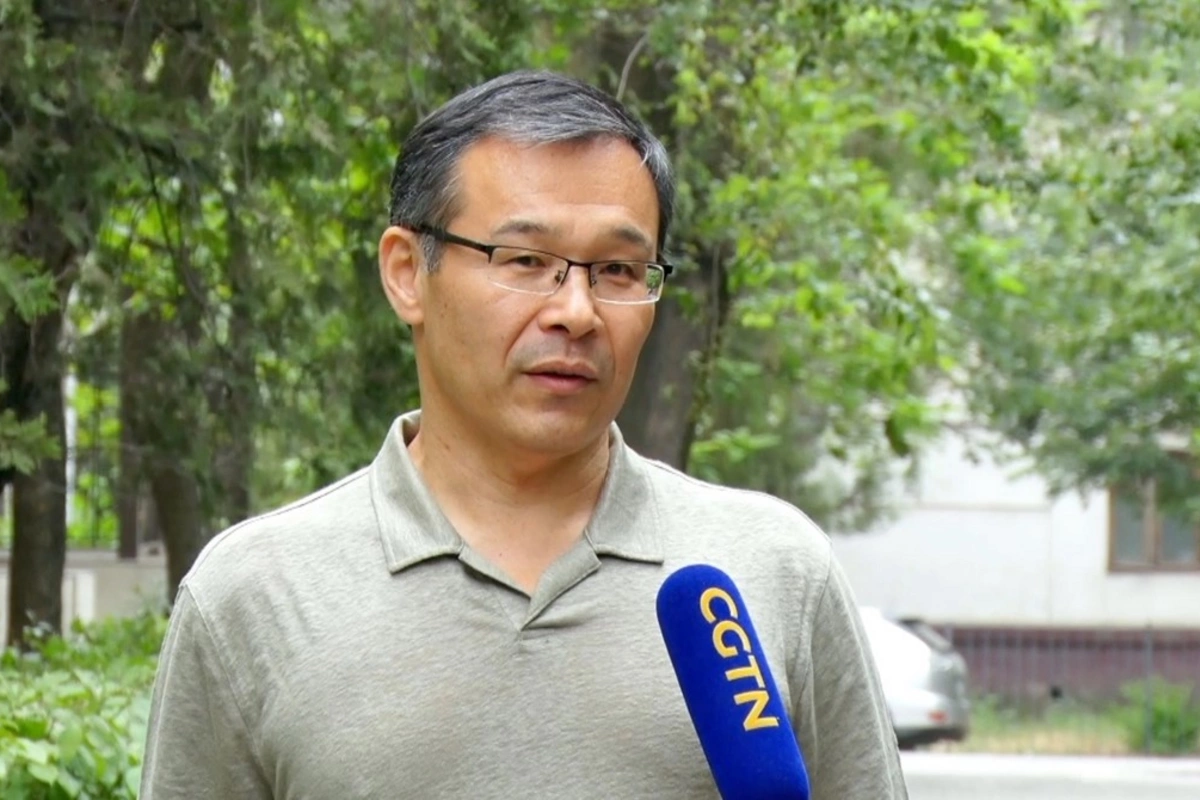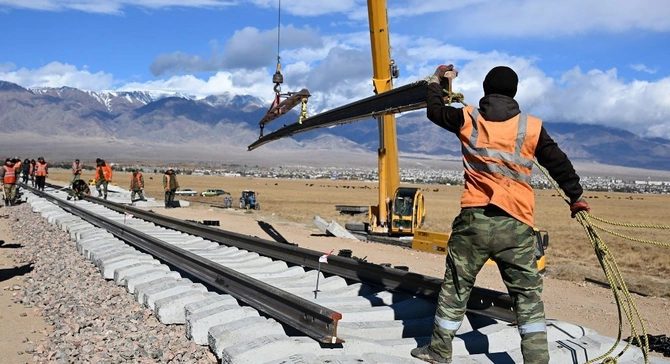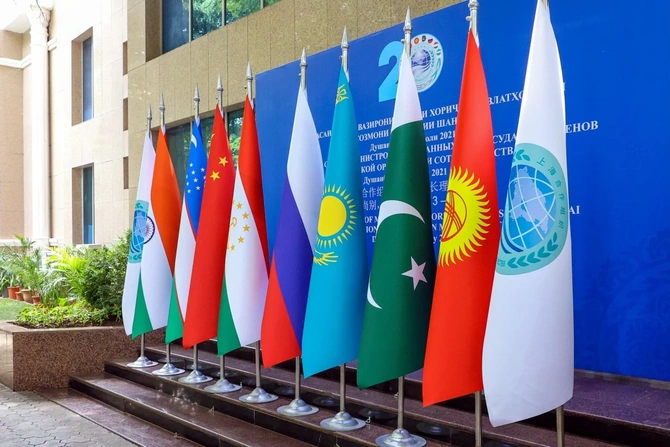
Photo: CGTN
The recent state visit of Kyrgyz President Sadyr Japarov to China marked a significant milestone in the development of the bilateral strategic partnership between the two nations.
A high-level delegation of nearly 50 representatives from Kyrgyzstan traveled to Beijing, underscoring the depth and scale of the "comprehensive strategic partnership" between the two countries.
Japarov's visit began with talks with Chinese Premier Li Qiang, followed by a meeting with Communist Party General Secretary Xi Jinping, the signing of multiple agreements, and a tribute to national heroes at Tiananmen Square. The visit concluded with the unveiling of a monument to the legendary Kyrgyz writer Chinghiz Aitmatov and Japarov’s participation in the opening ceremony of the Asian Winter Games in Harbin.
Xi Jinping highly praised Japarov’s leadership, emphasizing that under his presidency, Kyrgyzstan has demonstrated stable development and achieved significant progress. The Chinese leader attributed these achievements to the "independent development path" chosen by Japarov.
In response, Japarov reaffirmed Kyrgyzstan’s commitment to participating in even larger projects under the Belt and Road Initiative. As a result, both nations are expected to embark on ambitious new infrastructure ventures in the near future.
During the negotiations, the two sides signed over 20 agreements covering key areas of cooperation, including trade, investment, infrastructure development, and security.
Special attention was given to the construction of the China-Kyrgyzstan-Uzbekistan railway, the expansion of energy cooperation, and the development of logistics corridors-initiatives that could significantly enhance Kyrgyzstan’s position in the regional economy.
Despite the positive momentum, the Kyrgyz-Chinese partnership faces several challenges. How might these challenges impact further integration between the two countries? What mechanisms are in place to safeguard Kyrgyzstan’s national interests within the framework of this strategic partnership? What new opportunities does this cooperation present for Kyrgyzstan?
Photo: Press Service of the President of the Kyrgyz Republic
To explore these questions, The Caspian Post spoke with Sheradil Baktygulov, a Kyrgyz political scientist and independent expert on public administration.
-How would you assess the current state of the strategic partnership between Kyrgyzstan and China? What have been the key achievements in recent years?
-Since the establishment of diplomatic relations between the two sovereign states, Kyrgyz-Chinese cooperation has developed in two primary dimensions. The first is economic collaboration, and the second is mutual support in safeguarding national sovereignty and territorial integrity.
With the launch of the Belt and Road Initiative, the bilateral strategic partnership has transitioned from diplomatic engagement to joint development. The foundation for this strategic partnership was laid on September 11, 2013, with the signing of the Joint Declaration between the Kyrgyz Republic and the People’s Republic of China. Subsequent declarations have further strengthened and expanded these relations, culminating in May 2023, when the two countries elevated their ties to a "comprehensive strategic partnership in a new era."
These agreements are backed by tangible figures. For years, China has remained Kyrgyzstan’s largest trading partner. Additionally, China has been the biggest donor of humanitarian aid to Kyrgyzstan, providing grants as part of its development programs.
-Which of the 20+ agreements signed during the visit do you consider the most significant for bilateral relations? What are the expected short-term and long-term outcomes?
- Most of the agreements signed during the visit outline intentions for cooperation. This means that the task of implementing these agreements now falls on government officials. The foundation for new areas of collaboration is in place, but the success of these agreements will depend on the efficiency and competence of both Kyrgyz and Chinese officials.
It is also crucial to understand the nuances of working with different countries. For example, the European Union has a defined list of goods and services with established standards. Similarly, trade agreements with China must include detailed specifications regarding export and import requirements. These agreements are vital for every sector of the economy and, in essence, for every specialized participant in foreign economic activity. Simply put, each document is important in its own right.
-What joint investment projects are currently underway, and how do they impact Kyrgyzstan’s economy?
-Kyrgyzstan is implementing several dozen investment projects with Chinese participation, ranging from brick production to the assembly of electric motorcycles and 1.5-ton cargo trucks, with plans to expand into electric bus manufacturing. Chinese investments are also present in the mining sector, construction industry, agriculture, and education. Collectively, these projects serve as key drivers of Kyrgyzstan’s economic growth.
- Which infrastructure projects involving China are particularly significant and promising for the region’s development?
- One of the most promising infrastructure projects is the construction of the China-Kyrgyzstan-Uzbekistan railway. This railway will serve as a key link in the emerging Southern Transport Corridor in Eurasia. Notably, the multimodal China-Kyrgyzstan-Uzbekistan transport corridor has been operational since June 1, 2020.

Photo: railway.supply.com
Another major project involves the construction of power transmission lines for electricity exports to China. Additionally, the long-awaited North-South Highway, expected to be completed this year, will significantly reduce travel time between Balykchy and Jalal-Abad from the current 9-12 hours to just four hours.
These international transport corridors will play a crucial role in enhancing Central Asia’s transport and logistics infrastructure, benefiting neighboring countries as well.
- What mechanisms are in place to maintain regional stability and security within the framework of the bilateral partnership?
- The Kyrgyz Republic’s National Security Concept defines national security as "a guaranteed state of protection of the vital interests of individuals, society, and the state from external and internal threats."
To ensure this protection, Kyrgyzstan employs both multilateral and bilateral mechanisms.
• Multilateral mechanisms include the Collective Security Treaty Organization (CSTO) and the Shanghai Cooperation Organization (SCO).

Photo: TASS via Getty Images
• Bilateral mechanisms are primarily based on treaties and agreements on allied relations and non-aggression.
However, threats also arise from non-state and terrorist organizations that do not adhere to international agreements. To counter such threats, joint anti-terrorism and military structures have been established, which can be deployed if necessary.
- Are there risks to Kyrgyzstan’s sovereignty and economic independence due to its close cooperation with China?
- Both countries have agreed to develop their bilateral relations based on mutual respect for sovereignty and territorial integrity, non-aggression, non-interference in each other’s internal affairs, equality, and peaceful coexistence.
At the same time, Kyrgyzstan has established allied agreements with Russia and Kazakhstan and is expected to sign a similar agreement with Uzbekistan. Additionally, Kyrgyzstan is a full-fledged member of the CSTO and the UN.
Concerns that economic cooperation with China could lead to a loss of sovereignty are unfounded-this is akin to holding an apple and claiming it is an orange.
- What are your predictions for the evolution of the Kyrgyz-Chinese partnership over the next 5-10 years?
- The strategic partnership has proven to be an effective instrument for strengthening bilateral ties. Looking ahead, we can expect:
• An expansion in the scope of cooperation across new sectors.
• Deeper collaboration in existing areas of economic and infrastructure development.
• Increased mutual benefits from joint initiatives under the Belt and Road Initiative.
Kyrgyzstan and China’s strategic partnership is built on mutual interests, and in the coming decade, this relationship is expected to flourish further.
Share on social media